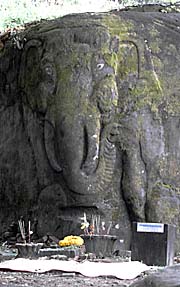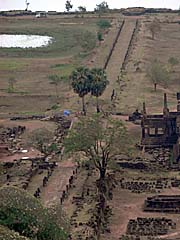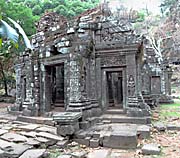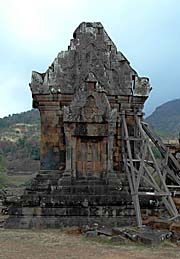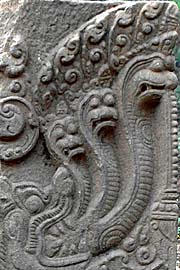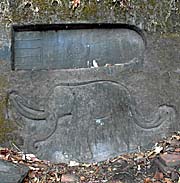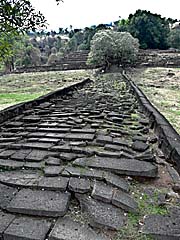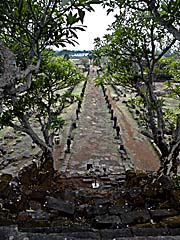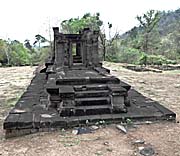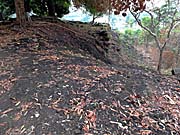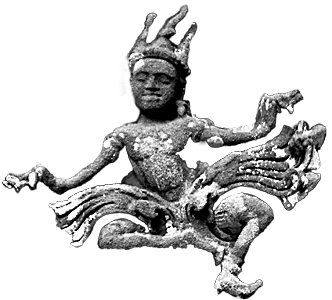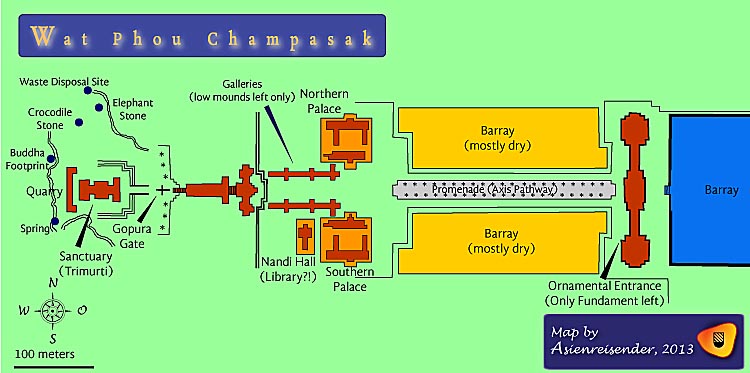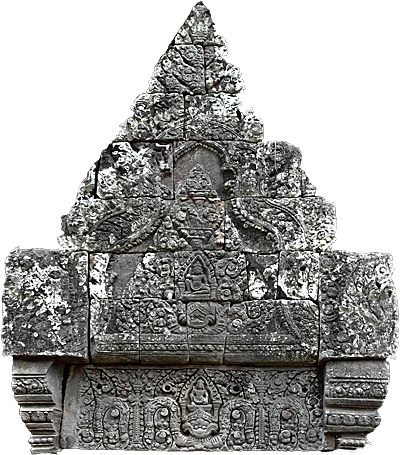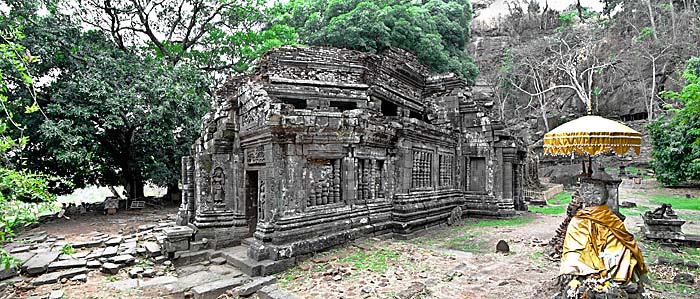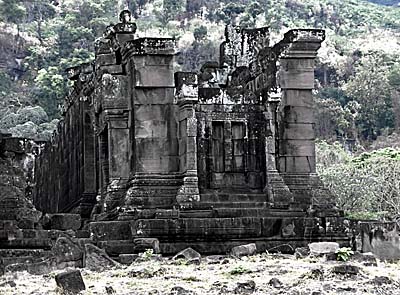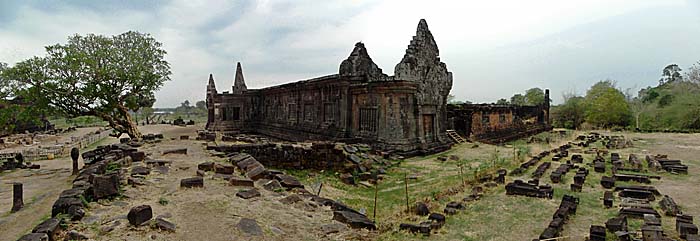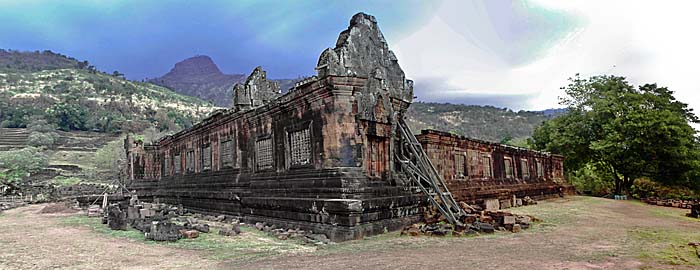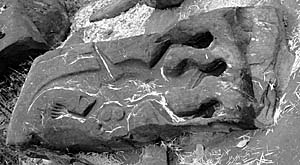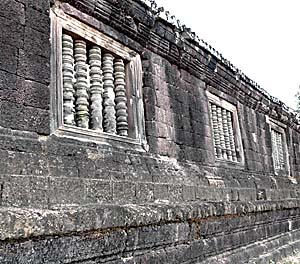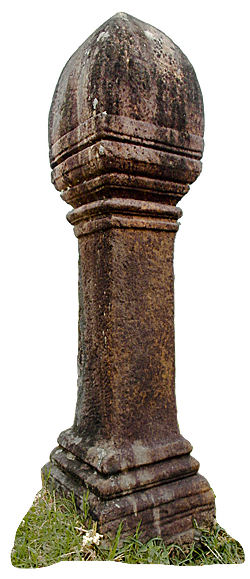1.
Wat Phou Champasak
There are only two UNESCO World Cultural Heritages in Laos: it's Luang Prabang and Wat Phou / Champasak Cultural Landscape (Phonsavan with the 'Plain of Jars' is applying for heritage status as well, but it's pending since long). The status was awarded to Wat Phou / Champasak in 2001.
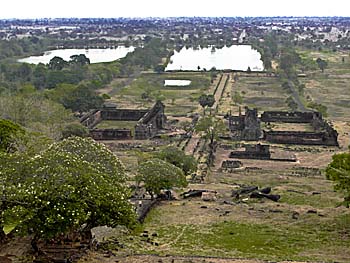
Part of Wat Phou / Champasak Cultural Landscape. The two 'palaces' are to see (south is right hand), the main axis, four barrays (the two behind the palaces are mostly dry. I guess there was a third big barray at the right, the axis is pointing to the former middle barray and continues behind the barray all the way down to the Mekong River. Image by Asienreisender, 2013
The site is situated in the south of Laos, some fourty kilometers south of Pakse.
Wat Phou (means: temple mountain) Champasak is more than an extraordinary medieval Khmer temple. It's the core of a whole landscape, stretching from the Phou Kao mountain (ancient name: Lingamparvata, Lingaparvat) on a west-east axis down for ten kilometers to the banks of the majestic Mekong River. Beside Wat Phou there were several more temples around, of whom Sida Temple (Sida = Sita, the female hero from the Indian Ramayana epos) some one kilometer south is only one more side temple. The most of the ancient temples and settlements are nowadays barely to recognize from the earth, but well to see from aerial views. There was also an ancient main road connection between Champasak and Angkor, via a number of other temples on the way.

A lintel in Wat Phou Champasak. It's a recently restorated piece. In the ancient times all the frescos were (probably nicely) coloured. Image by Asienreisender, 2013
